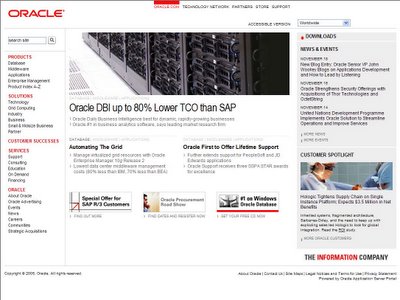
Southwest Airlines and Miller Beer each have television advertising spots running this month (December 2005). Southwest is using a direct response seasonal promotion for a gift card, while Miller is employing a branding play.
Southwest Campaign: I've been thinking about this for years....wondering why gift cards haven't been touted more prominently, in campaigns and the various customer touchpoints. In a time when air travel has been commoditized and most airlines are competing heavily on price - particularly with 3rd parties involved in sales (e.g. Expedia, Travelocity, Orbitz, etc.) - a golden window of opportunity is to offer gift cards or gift certificates.
This is a wholly different market available to capture, since most airlines devote the dollars and messaging to enticing consumers to purchase from them at or around the time(s) they need/want to fly. Well, why not create a market by making credits available to give away for whenever anyone wants to enable anyone else to fly whenever they want - students away at college, senior citizen parents living off of social security and away from grandchildren, best friends, etc. Absolutely brilliant. Timing was right on, too, since consumers are thinking about gift-giving and flying. To top it off, the clutter around the promotional messaging is minor, meaning chances of success increase.
Finally, I am of the personal belief that there still exists an opportunity for a stand-alone third party to own the 'spend it anywhere' gift card/certificates, so they could be applied at Southwest, American Airlines, United, etc. The technology is in place and airlines have embraced channel partners, so maybe this will someday come to be.
P.S. A beautiful model wherein money is collected up front as a gift credit, making it recognizable revenue immediately
Miller Beer:Seen the recent campaign: can't buy it unless you're over 30 campaign? A bar none, less than intelligent marketing/advertising campaign strategy, particularly for such a competitive industry and (U.S.) market. I am trying to imagine how the idea for this campaign was hatched and then approved. I am picturing a couple of creative types sitting around looking at the research, focusing in on the fact that the primary target audience consists of males over 30 years of age...."So, why not just make 30 the new 21 for the beer!" I wish I could have played devil's advocate in that room.
First, marketers have to decide between targeting the lowest common demoninator or choosing the median (not the mean!). This case seems to be the lowest common demoniator. Second, why adopt a strategy that MAY influence your primary audience, but SURELY alienate any secondary audiences costing you customers, short-term sales, and the life-time value from many could-be customers? Third, this doesn't even engage the over-30 audience in any meaningful way, meaning that there isn't even a case for ad hoc balancing for points #1 and #2 above. Fourth, using demographics as the sole basis for a campaign (vs. psychographics and other available data) isn't recommended, and neither is translating demographic research into a creative that highlights demographics. Finally, it isn't even funny.
( -- sigh -- )
The good, the bad, and the ugly. Much to witness, much to learn. Here's hoping that success can be mirrored and improved upon, and mistakes not repeated in the new year.


